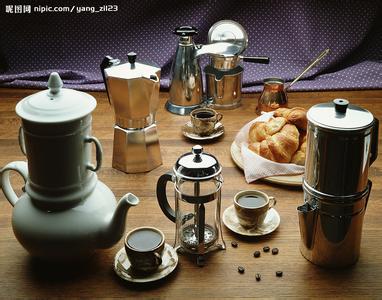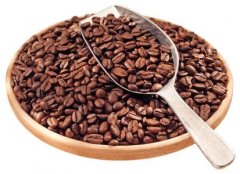Bright and fruity Paradise Bird Manor Fine Coffee Bean cultivation Geographical location, Climate and altitude

The sweetness of Papua New Guinea is high, with apricot-like bright and rising acidity, the palate is balanced and full-bodied, the overall flavor is balanced and elegant, clean and smooth, with fruit aromas. Generally speaking, coffee with good acidity is difficult to guarantee a good alcohol thickness, but the commendable thing about Papua New Guinea is that it has both high quality medium acid and good alcohol thickness. The finish is long after tasting.
Foreigners are mainly Australians. When you get off the plane and enter the immigration hall, there are three channels: PNG national passenger channel, visa-holding passenger channel and visa-on-arrival passenger channel. I am in the visa on arrival passageway, the visa process is very simple, the entry form and 100 Kina (local currency unit), the smooth entry, visa can stay there for two months. After finding the luggage, he went to the customs counter and the official only asked, "do you have any alcohol and tobacco?" After answering "no", he is allowed to pass (not even an X-ray machine). Exchange currency US$37.80 = K100 at the airport. According to locals, PNG Immigration and Customs have very loose controls on flights from Australia (usually arriving in the afternoon). However, for flights from Hong Kong, Manila and Singapore (which usually arrive in the early morning), they are particularly strict. When they get a visa on arrival, they will ask about the east and west, and the luggage will also be strictly searched.
The coffee industry plays an important role in the country's economy. More than 1 million people are directly and indirectly engaged in the industry. The government encourages planting by offering a minimum purchase price. The industry itself is controlled by the Coffee Industry Council (Coffee Industry Board). The commission is located in Goroka, in the eastern part of the island, while exports are handled by private companies.
The frost in 1975 destroyed most coffee crops in Brazil, but stimulated the development of coffee in Papua New Guinea. The Government has implemented a scheme to finance the creation of about 20 hectares of coffee plantations in rural or collective land ownership. This measure has indeed increased the penetration of coffee in the local economy, with annual production reaching 1 million bags by 1990.
However, it is almost inevitable that the surge in production leads to a decline in quality. Before 1991, the quality of coffee was good, and most of it belonged to open Y and so on. After 1991, the quality gradually declined, and with it the European market was lost. The extra price of coffee such as Y also gradually fell. This is related to the country's policy of "one grade, one price". This policy is not feasible for an industry as volatile as coffee. As a result, poor quality coffee beans have damaged the image of high quality standards for coffee such as Y, resulting in a backlog.
PNG coffee beans are favored by more and more coffee lovers in recent years because of their rich flavor, pleasant aroma, no herbal flavor or local flavor, and the rarity of coffee beans.
Papua New Guinea's top coffee beans (PNG AA) are as beautiful and precious as the country's national bird of paradise. As coffee is widely grown in highlands between 1300 and 1800 meters above sea level, it is usually full-grained and varied in taste, with pleasant acidity and fruit-like sweetness. PNG coffee beans are carefully washed Arabica beans with a texture as strong and mellow as a Van Gogh painting. Whether it is used to mix Italian products or general mixed coffee, it can make up for the lack of sour coffee.
Papua New Guinea is an island country in the western South Pacific and a member of the Commonwealth. The name of the country consists of Papua and New Guinea. There are many small islands here, about 600 in size. It is adjacent to Indonesia and Australia to the south. It belongs to the Asia-Pacific region, but it is a country in Oceania. Located in the tropical climate, high temperature and rainy. It has rich volcanic soil.
The main crops here are coffee and coconut, and the coffee industry plays an important role in the country's economy. More than 1 million people are directly and indirectly engaged in the industry in this country.
Papua New Guinea is rich in natural resources, but its economy is very backward. As one of the less developed countries in the world, many mountain residents still live a self-sufficient life of primitive tribes, only the coastal areas are relatively developed. Many farms reclaim land in the forest, some of which are in the depths of the forest, almost isolated from the rest of the world. So there are not many large-scale coffee plantations in Papua New Guinea, and about 75% of the coffee comes from small local farms. Because the country's overall economic level is backward and does not have good production conditions, the coffee output in Papua New Guinea is not high compared with other coffee-producing countries, but the quality of its coffee will not be inferior to that of large coffee-producing countries.
If Indonesia Mantenin is described as an old man with years of precipitation, then Papua New Guinea is a refreshing and elegant beauty. Not only the bean body is beautiful, the flavor is also beautiful and exquisite. From the map, we can see that Papua New Guinea borders Indonesia, but it does not have the full-bodied, miscellaneous and spicy characteristics of Indonesia's Mantenin. On the contrary, the flavor of Papua New Guinea is more balanced and cleaner. As coffee in this country is widely grown in the highlands of 1300 Murray 1800 meters above sea level, its unique volcanic soil and abundant rainfall create excellent natural conditions for the growth of coffee; and because the local coffee varieties are introduced from the Blue Mountain Coffee in Jamaica, it belongs to the tin card species. Coffee beans are basically washed to make the taste better and cleaner. The innate variety advantage coupled with the excellent growth environment naturally leads to high-quality coffee. Besides. The vast majority of coffee in Papua New Guinea is organic coffee, due to inconvenient transportation, there is no railway transport, there is no sound transport network, the overall economic difficulties, coffee farmers do not have the conditions to buy chemical fertilizer. On the contrary, the deficiency of production and transportation conditions has contributed to this major feature of the country's organic coffee.
Important Notice :
前街咖啡 FrontStreet Coffee has moved to new addredd:
FrontStreet Coffee Address: 315,Donghua East Road,GuangZhou
Tel:020 38364473
- Prev

A brief introduction to the Market Price of Fine Coffee Bean varieties in moderate acidity Paradise Bird Manor
Foreigners are mainly Australians. When you get off the plane and enter the immigration hall, there are three channels: PNG national passenger channel, visa-holding passenger channel and visa-on-arrival passenger channel. I am in the visa on arrival passageway, the visa process is very simple, the entry form and 100 Kina (local currency unit), the smooth entry, visa can stay there for two months. After finding the luggage
- Next

Slightly spicy bird of paradise estate fine coffee beans grind degree roast degree processing method brief introduction
If Indonesia's Mantenen is an old man with years, Papua New Guinea is a refreshing and elegant beauty. Not only is the bean body beautiful, but the flavor is also very beautiful and exquisite. As you can see on the map, Papua New Guinea borders Indonesia, but it lacks the rich, complex, spicy qualities of Indonesia's mantenin. on the contrary
Related
- Does Rose Summer choose Blue, Green or Red? Detailed explanation of Rose Summer Coffee plots and Classification in Panamanian Jade Manor
- What is the difference between the origin, producing area, processing plant, cooperative and manor of coffee beans?
- How fine does the espresso powder fit? how to grind the espresso?
- Sca coffee roasting degree color card coffee roasting degree 8 roasting color values what do you mean?
- The practice of lattes: how to make lattes at home
- Introduction to Indonesian Fine Coffee beans-- Java Coffee producing area of Indonesian Arabica Coffee
- How much will the flavor of light and medium roasted rose summer be expressed? What baking level is rose summer suitable for?
- Introduction to the characteristics of washing, sun-drying or wet-planing coffee commonly used in Mantenin, Indonesia
- Price characteristics of Arabica Coffee Bean Starbucks introduction to Manning Coffee Bean Taste producing area Variety Manor
- What is the authentic Yega flavor? What are the flavor characteristics of the really excellent Yejasuffi coffee beans?

